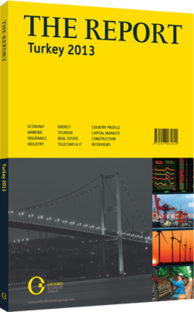Reality check: Analysing the government’s targets for 2023
Looking forward to the 100th anniversary in 2023 of the founding of the Republic of Turkey, Prime Minister Recep Tayyip Erdoğan and his government have set a number of goals for the country, some of them highly ambitious. These targets are to some extent an effort by Erdoğan to promote his bid to become president with executive powers, but they are also seen as positive catalysts to promote reforms.
Tough, But Plausible
The government aims to achieve a GDP of $2trn and a per capita income of $25,000 by 2023. Those numbers are not as ambitious as they first look, in part because inflation tends to eat away at least a quarter of the dollar’s value every 10 years. Turkey would need an average 8.8% dollar GDP growth rate to hit $2trn of GDP and a little more to hit $25,000 per capita, as the population is expected to pass 84m. That would actually be a significant slowdown from the 13.1% dollar GDP growth that Turkey averaged over 10 years to reach $787bn of GDP in 2012. However, the IMF, which has forecasts out to 2018, sees Turkey’s dollar GDP growth slowing to an average of 7.5%, which would only get Turkey to about $1.75trn by 2023.
For the same reasons, Turkey’s trade targets – $500bn of exports and $1trn of trade by 2023 – are ambitious but not overly so. The country had $207bn of exports and $456bn of trade in 2012, which was up by around four times from the $55bn of exports and $108bn of trade recorded in 2002.
Very Ambitious
Raising the employment rate by 10 percentage points and the size of the labour force to 30m people while reducing unemployment to 5% is more aggressive. The employment rate – the proportion of non-institutionalised adults who are employed – was only 44% in January 2013, due to a low labour force participation rate of 48%. That in turn was due to a very low ratio of women in the labour force (29%) relative to men (70%). However, raising the country’s employment rate would require a cultural transformation, which would be difficult for almost any government, especially a culturally conservative government, to achieve.
A small workforce means that the unemployment rate – defined as those looking for work divided by the size of the labour force – is high even when the economy is strong. The unemployment rate was 10.6% in the January 2013, but inflation was 7.3%, indicating little slack in the economy. To achieve a 5% rate, Turkey would need a large number of women to pursue formal employment.
Nearly Impossible
For Turkey to join the ranks of the top 10 economies in the world seems unlikely. What makes this goal so far-fetched is that Turkey currently ranks only 17, and three countries it would need to pass – India (11), Australia (13) and Indonesia (16) – have been pulling further ahead. India and Indonesia are larger, lower-income countries than Turkey with more catch-up growth potential, and Australia’s vast natural resources are likely to remain in high demand. Applying a very simplistic forecast in which all countries are expected to perform as well in 2013-23 as they did in 2002-12, Turkey would move up just two notches to 15, passing Spain (13), Mexico (14) and South Korea (15), while being surpassed by Saudi Arabia (19). By that method, by 2023 Turkey would still have less than two-thirds of the GDP needed to join the top 10.
Ranking GDP by another method, purchasing power parity (PPP), would not make much difference. PPP comparisons use hypothetical estimates of what a country’s goods and services might be worth if they were sold in the US. By the World Bank’s count, Turkey was the 15th-largest economy in 2011 with $1.26bn of PPP GDP. But moving up the ranks in PPP terms is more difficult, because PPP excludes the effects of real currency appreciation, which have been very important to Turkey’s rise. If all countries perform as well in 2012-23 as they did in 2001-11, Turkey would move up to 13, and would still have less than 80% of the GDP needed to reach the top 10.
You have reached the limit of premium articles you can view for free.
Choose from the options below to purchase print or digital editions of our Reports. You can also purchase a website subscription giving you unlimited access to all of our Reports online for 12 months.
If you have already purchased this Report or have a website subscription, please login to continue.

